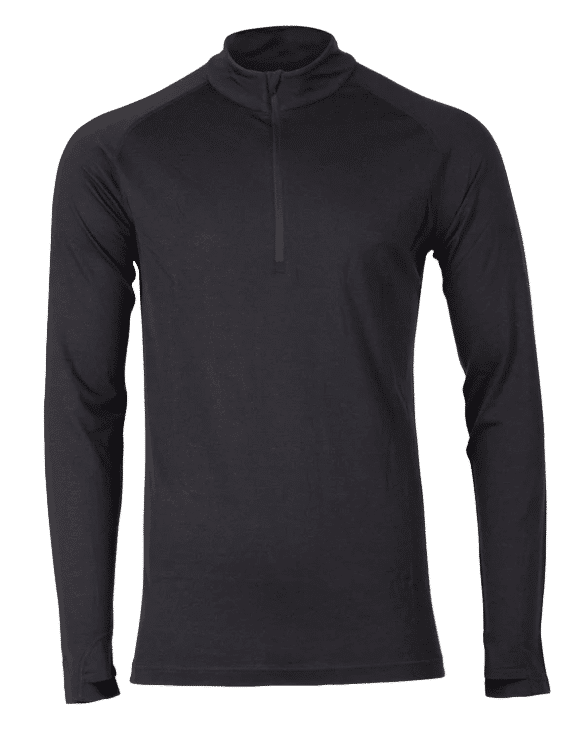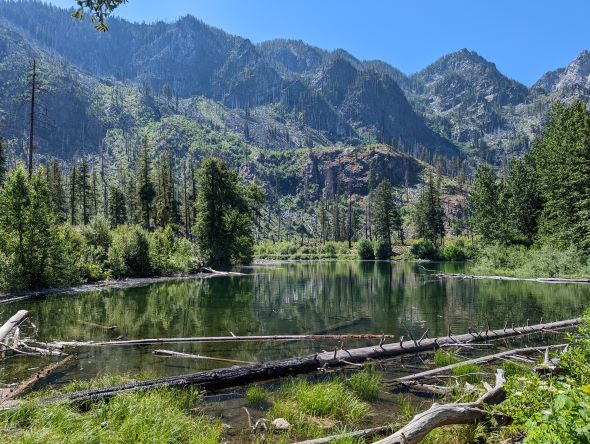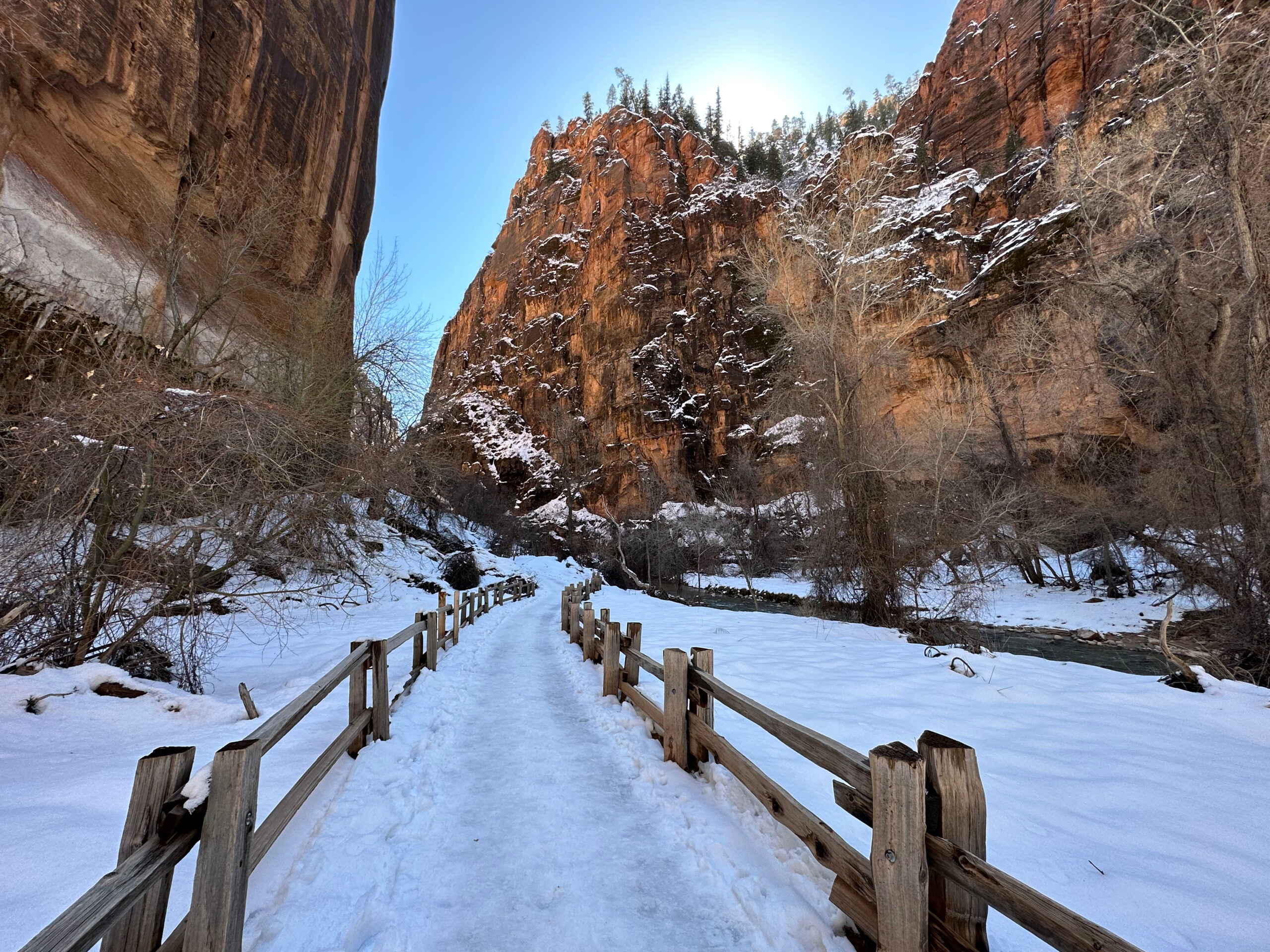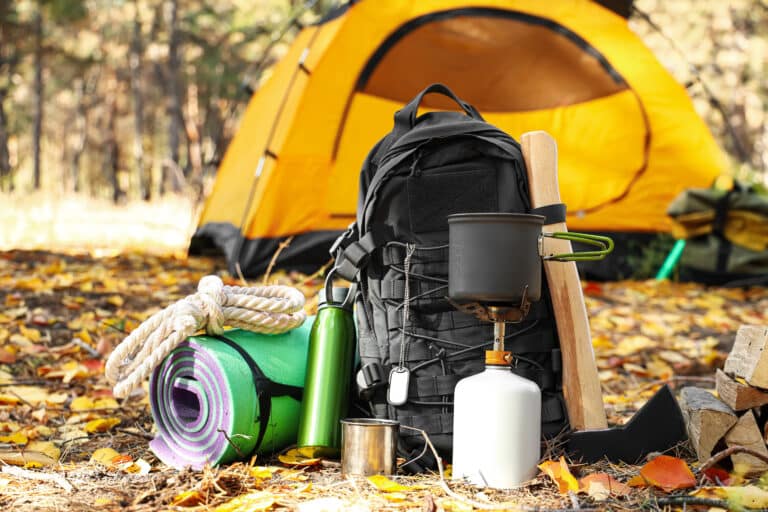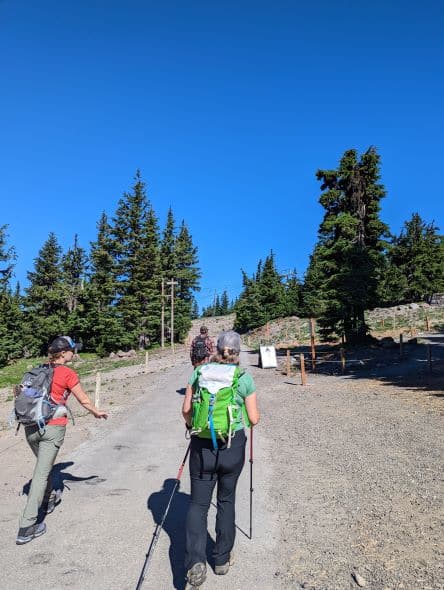The Ultimate Ski And Snowboard Clothing Guide
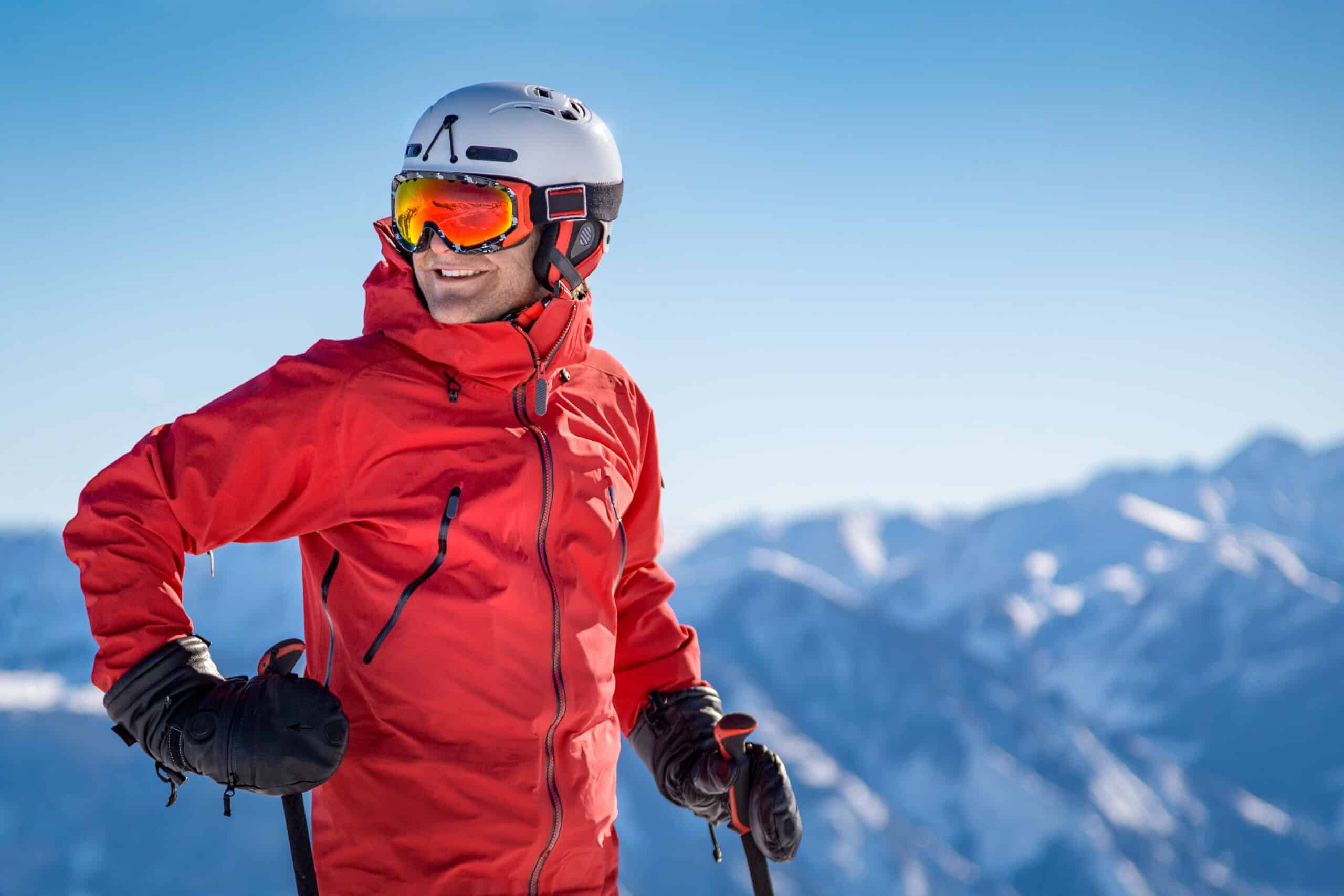
Our content may include affiliate links, through which we earn a small commission on purchases. Want to learn more about us? Read here.
When it comes to hitting the snow-covered slopes for a thrilling day of skiing or snowboarding, having the proper attire is essential for a comfortable, warm, and safe experience. Proper clothing protects you from the elements and improves your performance on the snow. This guide delves into the perfect ski and snowboard clothing, providing valuable insights into what to wear for these exciting winter snow sports.
Skiing and Snowboarding Attire: What to Wear on the Slopes
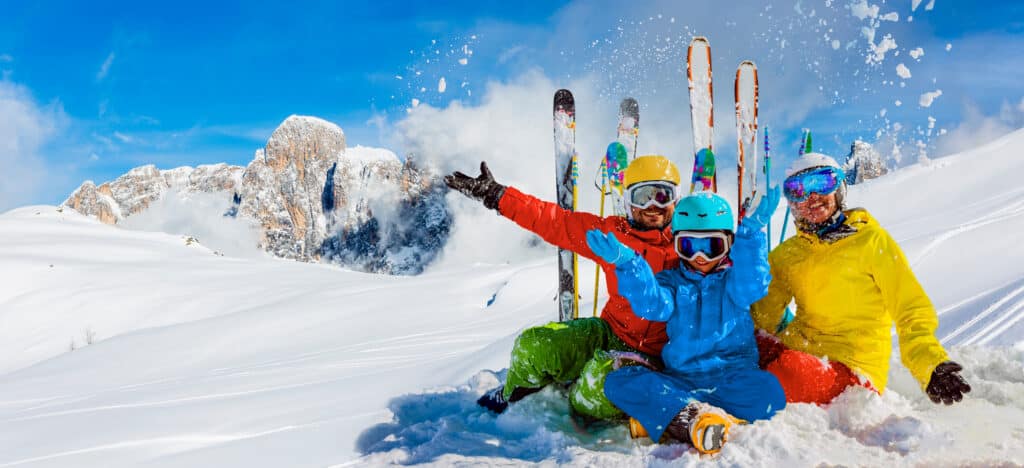
Whether you’re a seasoned skier or a snowboarding enthusiast, choosing the appropriate clothing for the cold weather is critical to ensure an enjoyable day out in the snow. Ski clothing is similar to snowboard clothing with a couple of tweaks. Here’s a detailed breakdown of a layering to wear skiing and snowboarding:
Base Layer: Moisture-Wicking Comfort
The base layer, sometimes called long underwear, sets the foundation for your attire. Opt for moisture-wicking materials that draw moisture away from your skin, keeping you dry and comfortable throughout your adventure. These base layers, including tops and bottoms, are usually made of synthetic materials or merino wool (we prefer merino wool).
They help regulate your body temperature and prevent moisture build-up, ensuring you stay warm and comfortable as you carve down the slopes. Do not forget about your feet; a good pair of ski and snowboard socks is necessary to keep your feet warm and dry.
Insulation Layer: Trapping the Heat
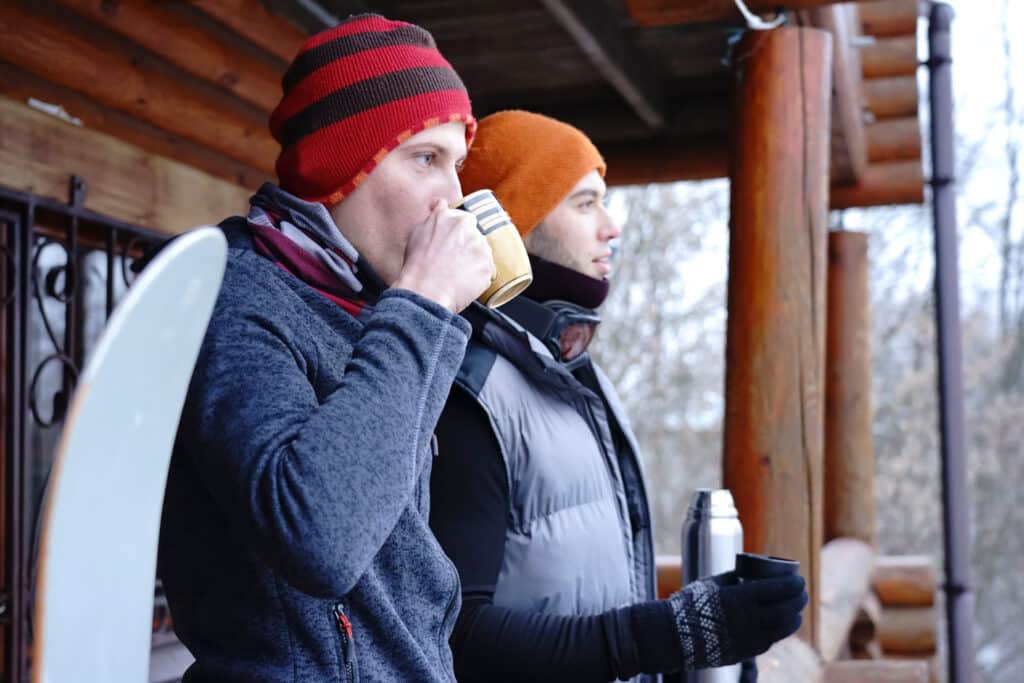
The insulating layer, often called the “mid layers,” provides warmth by trapping body heat close to the skin. This layer primarily focuses on insulation and is worn between the base layer and the outer shell (jacket and pants) for extra warmth.
Insulating layers are typically made of fleece, down, synthetic insulation, or wool. They create air pockets that retain heat and help regulate body temperature, keeping you comfortable in cold conditions. Our go-to for a mid-layer is our Mountain Hardwear Ghost Whisperer puffy jacket and the women’s Ghost Whisperer.
Outer Layer: Shielding Against the Elements
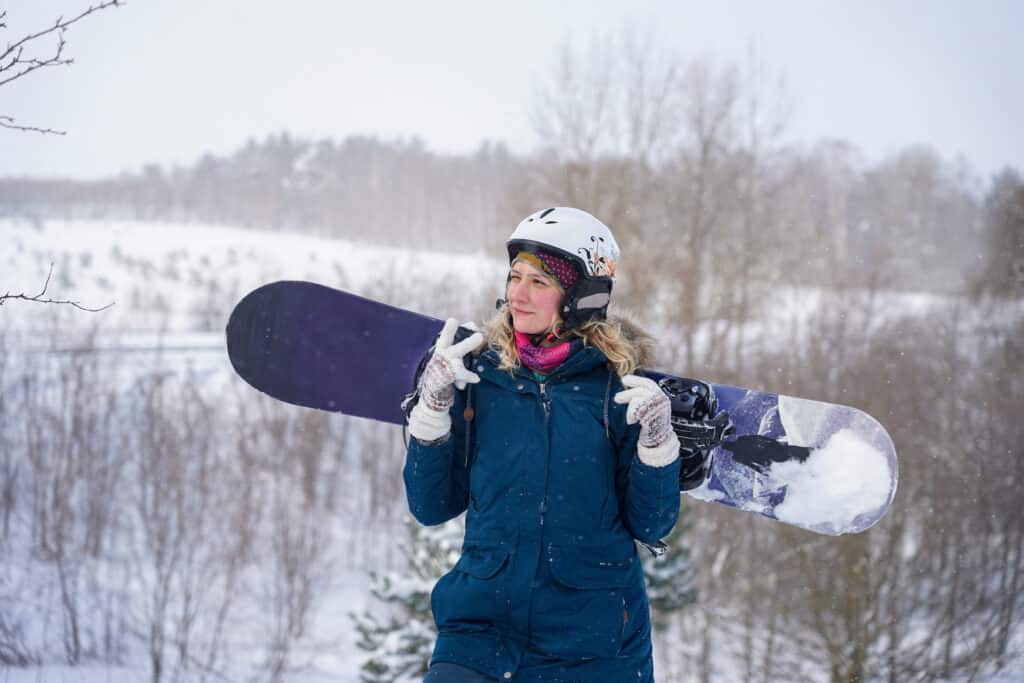
The outer layer, consisting of a waterproof shell layer and windproof ski or snowboard jacket and pants, is your first defense against the weather. Look for garments with adequate insulation to keep you warm and dry, and ensure they have proper ventilation options to regulate your body temperature.
The outer layer shields you from snow, wind, and any unexpected precipitation, providing ultimate protection for a successful day on the slopes. If you know the day will be nice, a non-waterproof outer layer may suffice, but gambling against Mother Nature is risky.
Ski Jacket vs. Snowboard Jacket
Ski and snowboard jackets may seem similar initially, but distinct differences cater to each sport’s specific needs and movements. Let’s explore the key differences between ski and snowboard jackets:
Fit and Style:
Ski jackets typically have a more tailored and form-fitting design. They are designed to be streamlined to complement the athletic movements and posture of downhill skiing. Snowboard jackets, on the other hand, often have a looser, more relaxed fit to accommodate the dynamic movements and stances characteristic of snowboarding.
Length:
Ski jackets are generally shorter, falling around the hip or slightly below. This design allows skiers to move more freely and comfortably without the jacket hindering their movements. In contrast, snowboard jackets are often longer, extending below the hips to provide extra coverage and warmth when sitting or kneeling on the snow.
Hood Design:
The hoods on ski jackets are often designed to be more streamlined and helmet-compatible since most skiers wear helmets. They fit snugly around the head, providing good peripheral vision and stability at high speeds. On the other hand, snowboard jackets may have larger hoods to accommodate beanies or goggles and offer more space and freedom for movement without a helmet.
Pockets and Storage:
Ski jackets typically have fewer and smaller pockets to minimize wind resistance and maintain a sleek profile. Snowboard jackets often feature larger pockets, allowing snowboarders to conveniently carry essential items like snacks, tools, or gloves. Additionally, jackets may have specialized pockets for lift passes or goggles.
Ventilation:
Both ski and snowboard jackets often feature ventilation options like pit zips or vents to help regulate body temperature during intense activity. However, the placement and design of these vents may vary based on the sport. Ski jackets may have vents strategically positioned for effective temperature control during skiing, while snowboard jackets might prioritize vents that work well with the snowboarder’s movements.
Durability and Reinforcement:
Snowboard jackets tend to have more reinforcement in high-wear areas like the shoulders and elbows due to the nature of snowboarding, which involves frequent use of these body parts during maneuvers. Ski jackets may have some reinforcement but often focus more on flexibility and movement.
Aesthetics:
The aesthetic differences between ski and snowboard jackets can be subtle but are influenced by the sport’s culture and trends. Snowboard jackets might incorporate more urban or street-style elements, while ski jackets often have a sleeker, sportier look.
In conclusion, while ski and snowboard jackets share some similarities in terms of their purpose of keeping the wearer warm and dry in cold, snowy conditions, they are tailored to the specific needs and movements associated with skiing or snowboarding, resulting in variations in fit, length, hood design, storage options, ventilation, reinforcement, and aesthetics.
Ski pants vs. Snowboard pants
Ski and snowboard pants are specialized garments tailored to each sport’s movements and needs. While they serve the same fundamental purpose of providing protection and warmth in cold, snowy conditions, there are key differences that cater to the unique requirements of skiing or snowboarding. Let’s explore the differences between ski and snowboard pants:
Fit and Style:
Ski pants typically have a more streamlined, form-fitting design. They are tailored to allow for a more upright posture and a natural forward-leaning position often assumed in skiing. The fit is optimized for efficient movement and aerodynamics on the slopes.
Snowboard pants often have a looser, baggier fit to accommodate the broader stances and greater range of motion associated with snowboarding. The extra room in the legs and hips allows for ease of movement, making it easier to execute tricks and maneuvers on a snowboard.
Length:
Ski pants are usually shorter, falling around the ankle or just above the boot. This design allows skiers to move freely without fabric caught in their boots or bindings.
Snowboard pants are often longer, falling slightly below the ankle or covering the boot’s heel. The extra length provides added protection and warmth, especially when sitting or kneeling on the snow, which is more common in snowboarding.
Waist and Suspenders:
Ski pants often have a higher waist with a more secure, integrated belt system or adjustable waist tabs. This ensures a snug fit around the waist to keep snow and cold air out, especially during high-speed skiing.
Snowboard pants frequently feature a lower waist for more comfortable movement and accommodate the lower stances often used in snowboarding. Some snowboard pants have suspenders or bib-style designs, providing additional support and keeping the pants in place during intense movements.
Padding and Reinforcement:
Snowboard Pants: Due to snowboarding, which involves more sitting and kneeling, snowboard pants often have reinforced areas in the seat and knees for added durability and protection against wear and tear.
Pockets and Storage:
Ski pants generally have fewer and smaller pockets to maintain a sleek profile and minimize wind resistance. These pockets are designed for essentials like keys, passes, or a small snack.
Snowboard pants typically feature more and larger pockets to provide ample space for storing items like gloves, snacks, tools, or a hat. The placement of these pockets is often designed for convenience and easy access.
Aesthetics:
Ski pants often have a more streamlined, sporty appearance, emphasizing functionality and a sleek silhouette.
Snowboard pants may feature diverse styles and designs, often reflecting urban or street-style influences with bold colors, patterns, and branding.
In summary, the differences between ski and snowboard pants lie in their fit, length, waist design, reinforcement, storage options, and overall aesthetic. These variations cater to the unique movements and styles of skiing and snowboarding, ensuring enthusiasts have the appropriate attire for an enjoyable and comfortable experience on the slopes.
Accessories: Complete the Ensemble
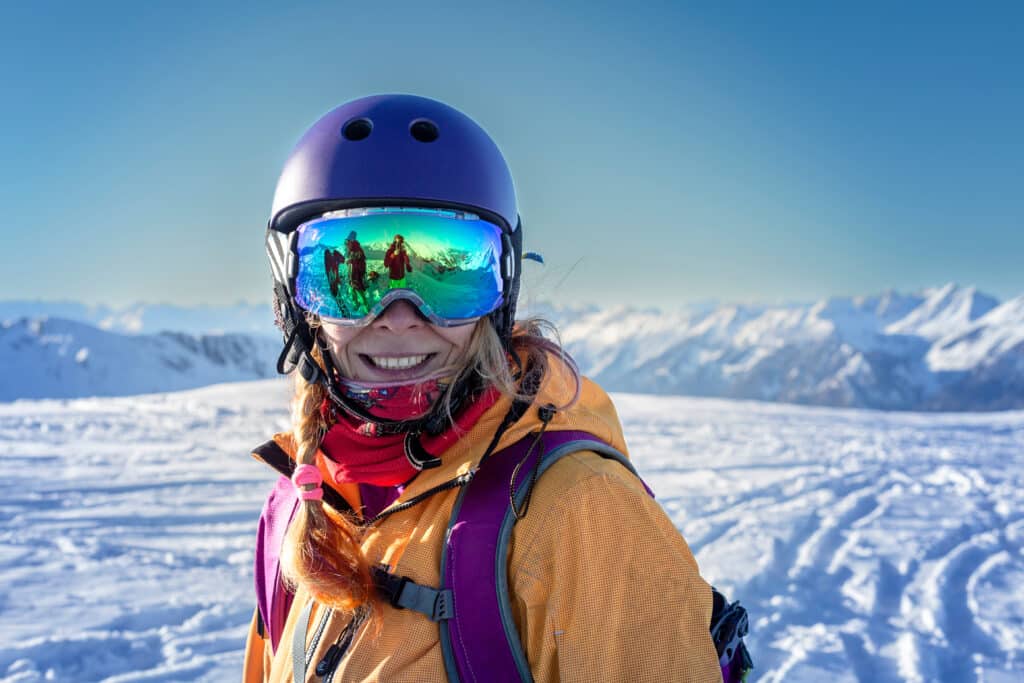
Pay attention to essential accessories like ski gloves or mittens, a ski hat or beanie to keep your head warm, ski and snowboard socks, a neck gaiter or scarf and a ski helmet to protect your head. Properly insulated accessories are crucial to protect your extremities from the cold days and keep you comfortable.
Snowboard or ski goggles are accessories that protect your eyes from glare and ensure clear visibility, enhancing safety and enjoyment during your adventure.
Pro Tip: If you are buying ski boots for the first time, test them out wearing the ski socks you’ll be wearing while skiing; do not use a pair of socks they have sitting around. Those have been used many times and are broken down. You will also want to determine whether you are a thin or thick socks person. This will ensure you have a proper fit and one less thing to be concerned with while learning to ski.
Conclusion
Choosing the right clothes for skiing and snowboarding is critical to a memorable day on the slopes. The proper attire not only keeps you warm and comfortable but also enhances your performance and overall experience. Remember to layer appropriately, invest in waterproof and windproof outer layers, and choose high-quality accessories for protection and functionality.
You’ll ensure a fantastic time skiing or snowboarding by dressing appropriately for the adventure and weather conditions. Stay warm, stay safe, and enjoy the thrill of the snow!
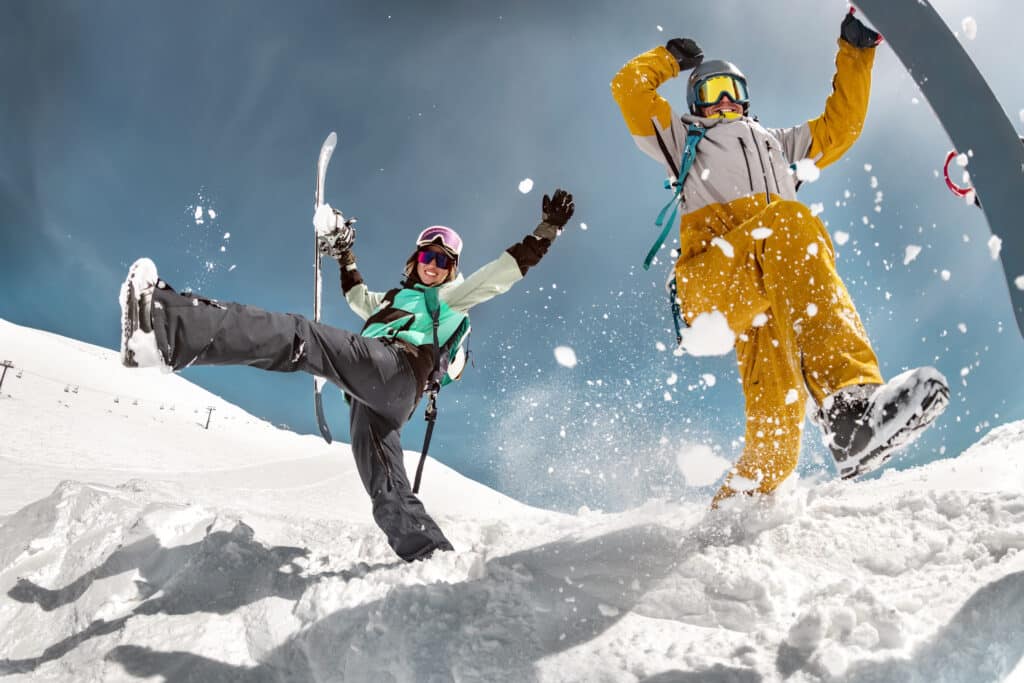
Frequently Asked Questions
What Ski Gear Do You Need?
First, you’ll need a good ski jacket and pants that keep you warm and dry amidst the cold snow. Grab a pair of gloves or mittens to keep your fingers toasty in the chill. Base layers are essential – moisture-wicking shirts and pants that keep you insulated from the cold. Don’t overlook warm, moisture-wicking socks to keep your feet happy and snug in your boots. And finally, a neck gaiter or scarf to keep that chill off your neck.
Of course, you’ve got your skis and bindings – your trusty ride down those snow-covered mountains. Comfy ski and snowboard boots are a must, ones that click securely into your bindings for a smooth ride. Poles are handy for balance and maneuvering as you cruise along. Don’t forget your helmet to keep your noggin safe from any unexpected spills. Goggles are essential, shielding your eyes from the snow and that glaring sun.
So gear up, hit the slopes, and have a blast carving through that powder!
How to wash ski clothes?
To wash your ski clothes, check the care label for specific instructions: empty pockets, zip-up zippers and close Velcro fasteners. Pre-treat any stains, then wash with a gentle, specialized detergent (non-harsh chemicals) on a delicate cycle using cold water. Avoid overcrowding the washing machine. After cleaning, rinse thoroughly and air dry or tumble dry on low heat.
Check and reactivate waterproofing if necessary. Lastly, inspect seams and seals for any damage and make necessary repairs. Following these steps helps maintain the quality and durability of your ski apparel.
Can I rent ski clothes?
Many ski resorts and nearby towns offer ski clothing rentals. This option allows you to access high-quality jackets, pants, gloves, and other necessary gear without purchasing. Renting ski clothes is ideal for occasional skiers or those who want to try out the sport without committing to a significant investment in apparel.
It’s a convenient and cost-effective way to ensure you have the right gear for a fantastic day on the slopes. However, plan well in advance and inquire about options before arriving at the ski resort. There are some online options as well. Kit Lender and Slope Threads are two of the more popular ones.
When do ski clothes go on sale?
Ski clothes typically go on sale during the off-season, typically in the spring and summer months. Retailers and stores aim to clear out winter and ski inventory to make space for new seasonal items. Significant sales events, like end-of-season sales, Black Friday, and other holiday promotions, often feature discounted ski clothing.
Additionally, mid-season sales may occur during the winter, offering deals on previous collections or excess inventory. It’s a great time to snag quality ski gear at a more affordable price, ensuring you’re prepared for the next skiing adventure.
What’s the difference between men’s and women’s ski gear
The difference between men’s and women’s ski apparel lies primarily in design, fit, and color schemes. Women’s ski gear is tailored to accommodate the female body shape with a narrower waist and broader hips. Jackets and pants for women often have a more defined silhouette and shorter inseams.
Additionally, women’s gear tends to have more vibrant and feminine color options. On the other hand, men’s ski gear is designed to fit a broader body frame with slightly longer sleeves and pants. The colors and patterns for men’s gear often lean towards more neutral or subdued tones.
Ultimately, both men’s and women’s ski gear offer the same level of functionality and performance, but they cater to the specific preferences and body types of each gender.

